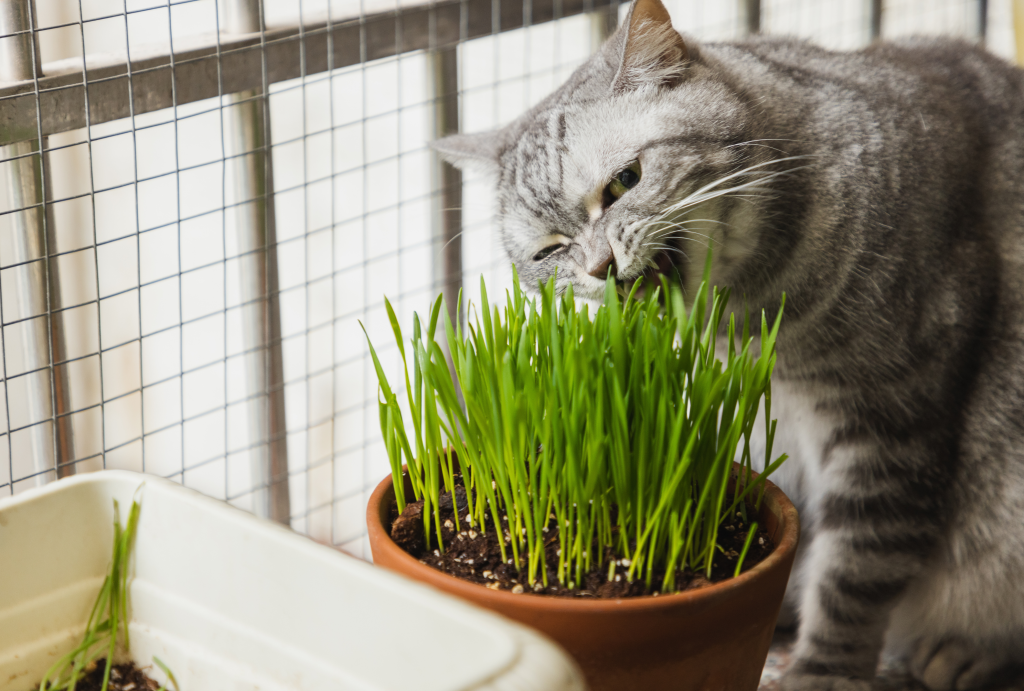:max_bytes(150000):strip_icc():format(jpeg)/bhg-all-about-cat-grass-4df206ad2b5340df81384954cb313a5f.png)
Key Takeaways
- Cat grass satisfies your cat’s urge to chew while supporting their digestion.
- You can grow cat grass indoors or outdoors, depending on the type.
- Though different than catnip, cat grass is also a healthy and safe plant for your pet.
Pet owners would do nearly anything for their pets—but what about obtain a green thumb? Cat grass is a simple-to-grow source of greenery that can brighten up your home and even dissuade your kitty from chomping on things that don’t belong to them. Plus, it’s a great source of dietary fiber for your pet. Learn more about what cat grass is, how it differs from catnip, and where to grow it.
What Is Cat Grass?
Cat grass refers to a broad range of grasses that are safe for felines to eat. Although cats are carnivores, cat grass serves as a great supplemental source of dietary fiber. Plus, it’s pretty adorable to watch them nibble and gnaw on the blades.
While there are many types of cat grass, its appearance doesn’t vary too much from species to species. Some just happen to be better suited for indoor or outdoor growing.
“Traditional cat grass is oat, wheat, barley, or rye—thin, bright green blades,” says Stephanie Siabatto of Do Good Gardens in Chicago. “Outdoors, you can use ornamental grasses like Japanese Forest Grass or native Carex.”
Cat Grass vs. Catnip
Although both boast a bright green hue, cat grass and catnip are two completely different plants. While cat grass is, you guessed it, a grass, catnip is a leafy herb that acts as either a stimulant or sedative for cats when ingested, depending on the cat.
Cat grass doesn’t possess the same medicinal qualities as catnip, but it may serve as a suitable alternative for cats that enjoy chewing on their owner’s belongings.
Where and How to Grow Cat Grass
Because there are so many different types of cat grass, growers have the option to plant indoors or outdoors. It just depends on how much maintenance you’re up for.
“Inside or outside? Both work, but outdoor native alternatives are perennial—plant once and cats enjoy for years vs. replanting indoor grass every 2-3 weeks,” Siabatto says. “It’s the difference between a maintenance headache and a sustainable solution that benefits both your cat and your community’s wildlife.”
Time to grow! Here are a few ways to ensure your cat grass has a strong start, according to Siabatto:
- Keep seeds moist but not soaked
- Provide bright light
- For outdoor grasses, plant them in spring in well-draining soil
Complementary Plants
While you’re down in the dirt, you might as well plant a few more things. Siabatto suggests several complementary plants would complete your plot of cat grass, including:
Not every plant is safe for cats. Make sure to do your research if you plan to have feline visitors in your garden.
What If I Don’t Have a Cat?
Ornamental grasses are for everybody, not just cat owners. While it may be a bit strange to grow indoor cat grass varieties if you don’t have a cat, they have the potential to beautify any outdoor space.
“Ornamental grasses add beautiful texture to landscapes even without cats,” Siabatto says. “You can make it pretty for Houseplants who roam, too.”

